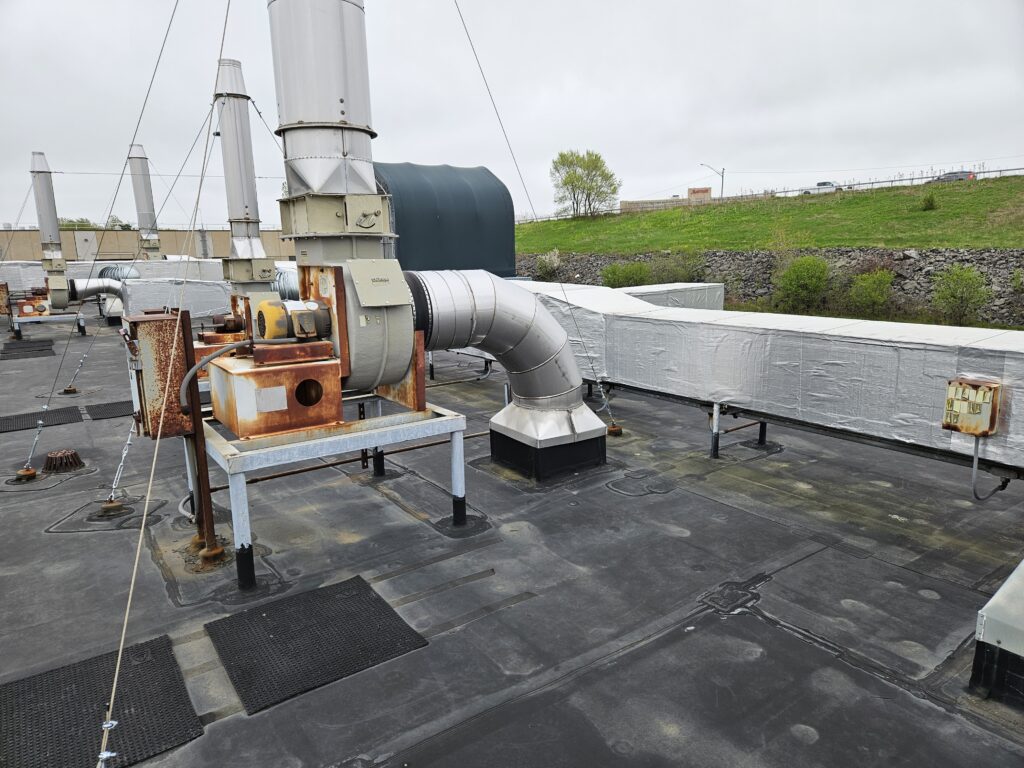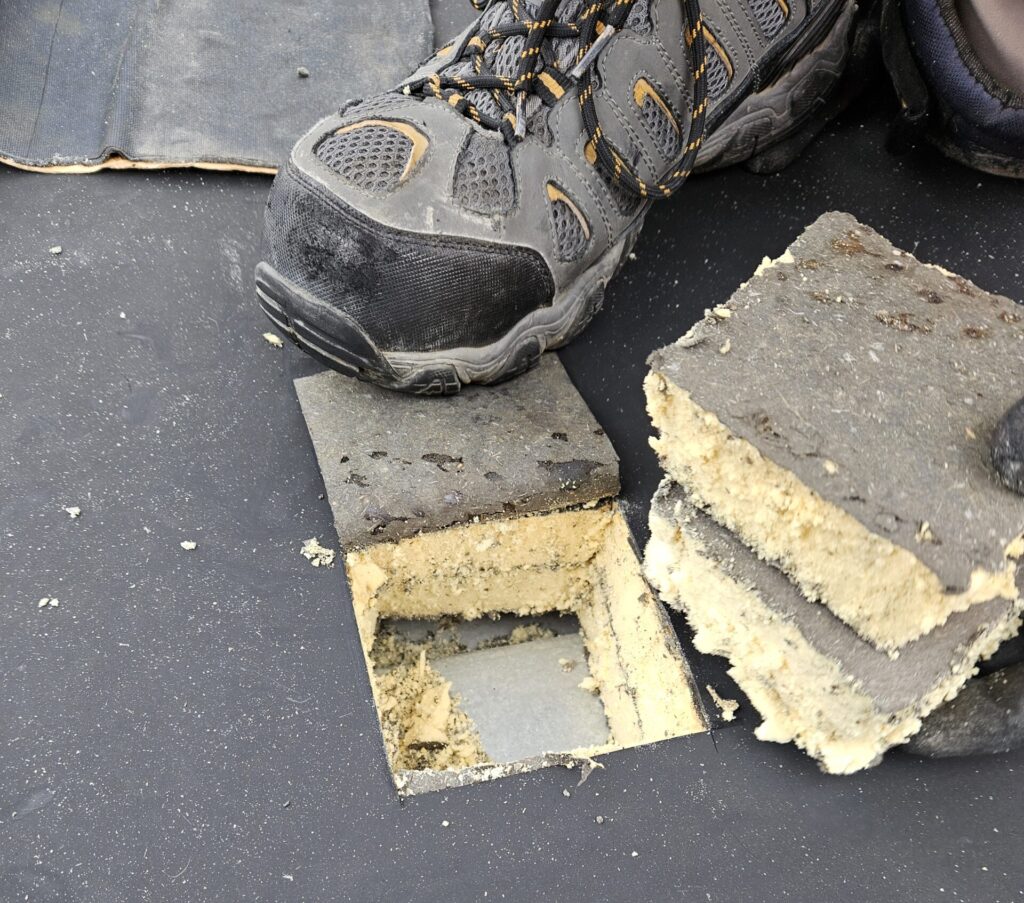When performing a roof inspection at a facility like a chemical storage building, especially one with older construction or multiple roof layers, it’s critical to follow a systematic approach to identify potential hazards such as asbestos-containing materials (ACM) or polychlorinated biphenyls (PCBs). These inspections are essential for safety, regulatory compliance, and proper renovation planning.

1. Evaluate Existing Insulation and Surface Materials
One of the first steps in a roof inspection is identifying and evaluating HVAC duct insulation or any rooftop mechanical components. These materials may contain asbestos, particularly if they appear fibrous or were installed during a time when ACM was commonly used. In cases where insulation is visibly damaged or already opened, a visual determination of material type may be possible. However, if there’s uncertainty, representative sampling is necessary.
2. Determine Roofing System Composition Through Core Sampling
Identifying the roof system’s construction is a critical part of the inspection. This often requires cutting through the surface membrane (typically rubber or built-up roofing) to expose what lies beneath—commonly ISO foam board and ISO paper insulation. If multiple layers are present, it’s important to determine whether they are homogenous in material and condition. Representative samples should be taken from each unique layering or structural change to ensure proper identification of all materials, including potential ACMs.
Core samples should extend down to the roof deck to determine the material of the decking (e.g., concrete or metal) and whether it contains any suspect materials. This process also helps inform safe demolition or renovation practices.
3. Inspect Parapet Walls and Perimeter Flashing
The base of parapet walls and any transitions from horizontal to vertical surfaces often contain sealants or mastics that may be suspect ACMs. These areas should be carefully peeled back to assess what’s behind the rubber or membrane covering. If suspect materials are found, at least two samples from different locations should be collected for laboratory analysis.
4. Sample Additional Roofing Components and Anchors
Roofing tar used around anchor points, caulks, sealants, and any rooftop panels or enclosures must also be assessed. These materials often vary across roof sections, so multiple representative samples should be taken from different areas. If any materials appear fibrous or unusually textured, they should be sampled as suspect ACMs. Additionally, if there is any indication that materials may contain PCBs (such as older tar products), PCB sampling should be conducted.
5. Document Any Other Potential Hazards, Even If Out of Scope
During the course of the inspection, any unrelated but relevant observations—such as the presence of vermiculite insulation indoors—should be documented and reported. Vermiculite is widely recognized as being contaminated with asbestos, especially if sourced from the Libby, Montana mine. Even if it’s not within the scope of the roof inspection, noting and communicating its presence is a responsible and necessary step.
How Encorus Group Can Help
Encorus Group can assist with regulated building material inspections, asbestos and PCB sampling, project planning, and more. Our experienced team understands the requirements and sensitivities involved in inspecting aging facilities, and we’re here to help you remain compliant and safe during renovations or demolitions.
Contact Sean Fitzgerald at 716.592.3980, ext. 187, or email sfitzgerald@encorus.com.


